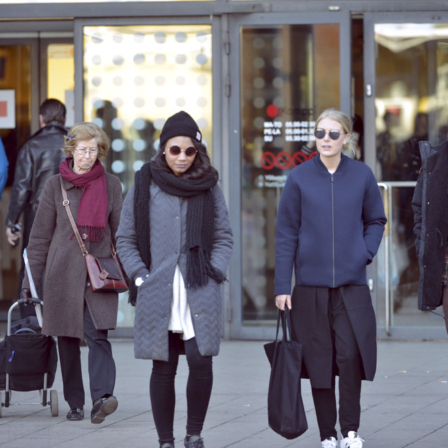Trust is easy to lose and difficult, if not impossible, to regain. Trust makes business processes easier, cheaper and quicker, increasing their profitability. For these reasons, trust is a key element in the new Finnish Data Design concept.
“Iconic” is probably the right word to describe the key works of Finnish designers like Tapio Wirkkala, Oiva Toikka or Maija Isola. Finland’s nature, cultural heritage and everyday life were sources of inspiration for these figures. For an objet d’art or a utilitarian object to become a classic, it needs to play a part in the way a community sees the world and in the community’s overall narrative. In addition to being stylish, the key criteria for utilitarian objects include simplicity, usability and the ability to improve the user’s quality of life.
The golden age of applied arts in Finland progressed alongside the country’s most intense period of industrialisation, from the post-war years to the 1960s. The current Finnish welfare society was largely built on the growth arising from that period of industrialisation. On the other hand, our welfare system is also specifically based on the needs and rhythm of life of a traditional industrial society.
Rapidly progressing digitisation is shaking the foundations of our society in more ways than one: while the nature of work is transforming and services are playing a more central role in the production structure of society, expectations and needs related to public-sector services are changing. Digitisation is also opening up countless new opportunities for designing and providing social welfare and healthcare services in a completely new way.
In late 2015, Sitra launched a new set of projects preparing for the establishment of a body focused on gathering and co-ordinating well-being data. Known as Isaacus, the service is a digital health hub aimed at responding to the challenges posed to society by rapid change. (Further information on Isaacus is available here.)
As we have stated before, the history of the world economy is filled with proof of the domino effect that can result from a single development step. When several, apparently unconnected developments converge and continue in the same direction, the result can be historical upheaval that is larger than the sum of its parts. Even the world’s top economists cannot agree on whether or not digitisation will result in a break with the past equal to earlier industrial revolutions. Nevertheless, it is clear that many old ways of thinking and practices are being replaced with new ones and that we are dealing with global megatrends. In such a situation, individual enterprises or nations are better off being at the forefront rather than bringing up the rear of developments.
What does Tapio Wirkkala have to do with any of this, you may ask. Well, digitisation could usher in the dawn of a new golden age of Finnish design. This new Finnish design is about using our existing, abundant data reserves and supporting the creation of ecosystems around them. Data is a natural resource. By using it, and in particular by drawing together data from various sources, we can create new Finnish classics that could become internationally renowned export assets.
As with previous design classics, simple is beautiful, and a product’s usability and capacity to improve its user’s quality of life are among the criteria applied. Finnish Data Design is inspired by the best practices of Finnish society and a long tradition of information gathering combined with Finland’s fundamental characteristic, trust, which exists between citizens and institutions as well as among citizens. Finns trust the authorities and, by global comparisons, corruption is virtually non-existent here.
With regard to the sustainable use of data reserves, trust is our number one competitive advantage over other countries. This does not mean that individuals should become passive bystanders, freely handing over their personal data – quite the opposite. Building a system centred around individuals and giving them control over the data gathered on them is the best possible way to foster trust and customer orientation (see this previous article on my data).
Trust enables us to set effective rules on the use of data reserves. This objective is also included in the recently completed National Genome Strategy for Finland. Thanks to such trust, we can also make room for the innovation activities of private undertakings, whether they are small and agile start-ups or established companies.
In sum, trust must be cherished as a slowly renewable resource. Data, on the other hand, is a rapidly growing and infinite resource. The combination of these two natural resources is globally unique and can be found in Finland. It is: Finnish Data Design.



Recommended